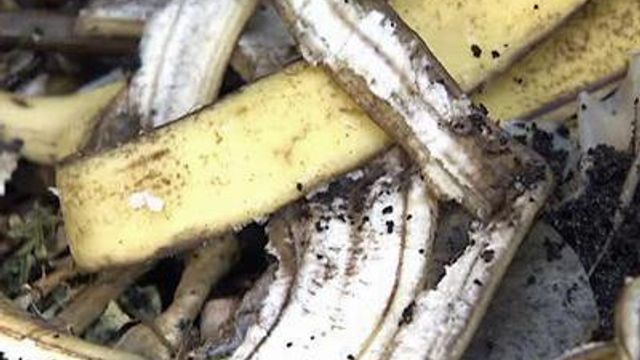Composting turns yard waste, food scraps into beneficial soil
The City of Raleigh has sold out of composting bins. However, city officials said you don't need one to start a compost pile. Any kind of container, or a free-standing pile of compost, will work.
Posted — Updated“Composting is working with Mother Nature to recycle your yard waste and food scraps into beneficial soil,” said Bianca Howard, the city’s solid waste services education specialist.
Compost piles can contain things such as trimmings, fruits, vegetables and paper products. Meat, bones, dairy products, whole eggs, fatty foods, treated wood, pet or human waste and diseased plants should not be composted.
Howard suggests adding water and stirring the pile regularly. The microbes in the compost need the moisture and air to break down the scraps.
"If you do it when you're adding food scraps, you don't even have to think about it. Add food, add water and poke around a little bit,” she said.
If the compost bin is on the ground, it will naturally attract earthworms.
"These are the creatures that are really doing the composting!” Howard said. “You know the compost is finished when you can't recognize the pieces that went into it. It has an earthy smell to it. It's dark brown. It's starting to look more like soil.”
That process can take about three or four months. The compost can be added to soil to give plants a natural boost.
“You can use compost in so many ways. You can dig it into the ground when you're planting a new vegetable garden this summer. You can even take a small amount and mix it with regular soil or potting soil when you're planting container gardens,” Howard said.
Compost Pile Layers from Bottom to Top
10_. Layer of leaves
Trouble Shooting
- Bad odor: the pile probably is not getting enough air, or has too much moisture. Turn the pile to introduce oxygen. Mix in dry materials to absorb moisture.
- Ammonia odor: there is an overabundance of green materials (too much nitrogen). Mix in brown material (carbon) to balance the nitrogen.
- Pile is damp and warm in the middle, but nowhere else: the pile is probably to small. Collect more material and introduce it into the pile.
- Pile is damp and sweet-smelling but produces no heat: the pile is probably not getting enough nitrogen. Mix in a nitrogen source, such as fruit and vegetable remains, fresh manure, blood meal or grass clippings.
- Pile is attracting pests or flies: the food remains are probably not being buried deep enough. Bury food remains about 8-12 inches deep. Also, avoid putting meat scraps or fatty food in the pile.
Paper products such as newspaper, paper plates, paper napkins, paper towels and tubes, paper coffee filters and tea bags are very high in carbon (brown material) but should be moistened, torn or shredded and added in small quantities at a time.
• Credits
Copyright 2024 by Capitol Broadcasting Company. All rights reserved. This material may not be published, broadcast, rewritten or redistributed.





